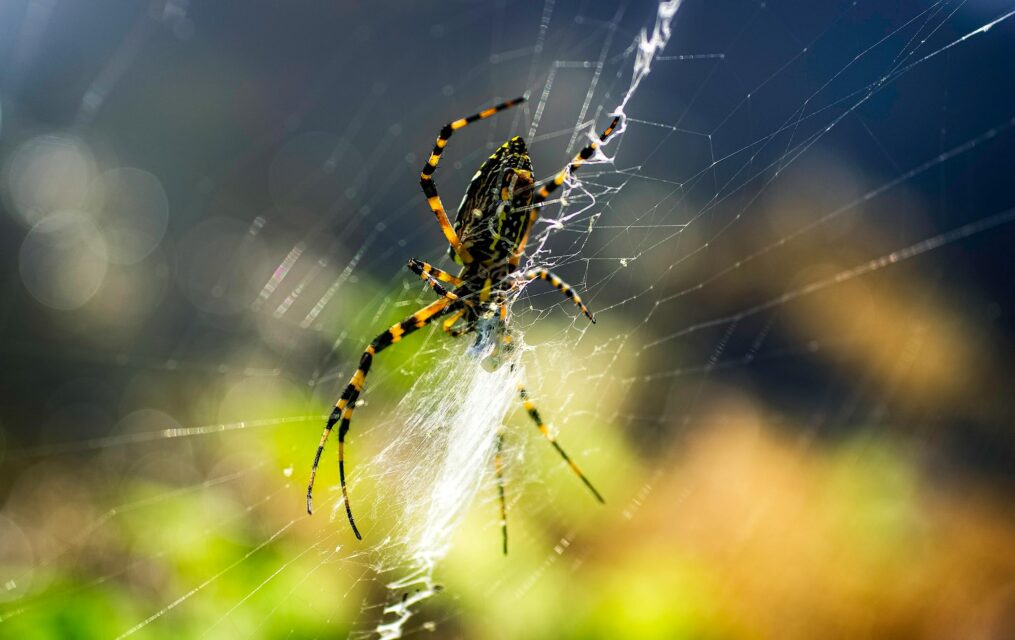Did you know that spiders are masters of survival, capable of enduring extended periods without a meal? Despite their small size, these eight-legged creatures possess remarkable adaptive abilities that enable them to thrive in diverse environments.
In this article, we will explore the fascinating world of spider survival, focusing on how long can spiders live without food and the factors that influence this extraordinary feat.
Through gaining insights into how long can spiders live without food, we gain valuable insights into the resilience and adaptability of these often misunderstood arachnids.
Overview of Spider Biology

Spiders, belonging to the class Arachnida, are known for their distinctive anatomy and physiology, which play a crucial role in their survival strategies. These remarkable creatures possess several unique traits that enable them to endure extended periods without food.
Anatomy
Spiders are characterized by their eight legs, which are attached to a two-segmented body consisting of the cephalothorax and the abdomen. Their bodies are covered in a hard exoskeleton, providing protection from predators and environmental hazards. Spiders also have multiple pairs of eyes, typically eight, which vary in arrangement and function among different species.
Physiology
One of the most remarkable aspects of spider physiology is their ability to survive without food for extended periods of time. This ability is attributed to their low metabolic rate, which allows them to conserve energy during times of food scarcity.
Furthermore, spiders are capable of storing fat reserves in their bodies, which serve as a source of energy when food is scarce.
Unique Traits Related to Survival Without Food
Spiders have evolved several unique traits that contribute to their ability to survive without food. For example, some spider species are known to enter a state of dormancy called diapause, during which their metabolic activity decreases significantly, allowing them to conserve energy.
Spiders also exhibit behavioral adaptations, such as reducing their activity and movement, to further conserve energy during periods of food scarcity.
Factors Affecting Spider Survival Without Food
The ability of spiders to survive without food can vary significantly among different species. While some spiders can endure months without a meal, others may require more frequent feeding to sustain themselves. This variation is influenced by several factors, including the spider’s metabolic rate, size, and physiological adaptations.
1. Species Variation
Different spider species have evolved unique strategies for surviving without food. For example, tarantulas are known for their ability to go several months without eating due to their low metabolic rate and efficient energy storage.
Other species, such as jumping spiders, may require more frequent meals to maintain their energy levels due to their higher metabolic rates.
2. Metabolic Rate
The metabolic rate of a spider plays a crucial role in its ability to survive without food. Spiders with lower metabolic rates can conserve energy more effectively, allowing them to go longer periods without eating.
Species with higher metabolic rates may need to consume food more frequently to sustain themselves.
3. Physiological Adaptations
Spiders have evolved various physiological adaptations that help them survive food scarcity. For example, some species can enter a state of dormancy, reducing their metabolic activity and energy requirements.
Other species may be able to reabsorb certain internal organs, such as their digestive system, to conserve energy during periods of food shortage.
4. Environmental Factors
Environmental conditions, such as temperature and humidity, can significantly impact a spider’s ability to survive without food.
In colder temperatures, spiders may enter a state of hibernation or reduce their activity levels to conserve energy. Conversely, in warmer temperatures, spiders may require more frequent feeding to maintain their energy levels.
Humidity levels can also affect a spider’s ability to survive without food. High humidity can help spiders conserve moisture and energy, while low humidity may increase their need for hydration and food.
Case Studies and Examples
Are you eager to know how long can spiders live without food? Let’s go through the case studies of Tarantulas and Eremobates palpisetulosus
Tarantulas are one of the best-known examples of spiders that can survive long periods without food. These large, hairy spiders are known for their ability to go several months without eating, thanks to their low metabolic rate and efficient energy storage mechanisms.
In one study conducted by researchers, a tarantula was observed surviving for over a year without food, showcasing its remarkable resilience in the face of food scarcity.
A different example is the desert spider (Eremobates palpisetulosus), which has been found to survive in extremely arid environments with little access to food. These spiders have adapted to their harsh environment by minimizing their water loss and reducing their metabolic rate, allowing them to survive on minimal food for extended periods.
In addition to these examples, several studies have highlighted the adaptive behaviors of spiders when faced with food scarcity. For example, some species of spiders are known to cannibalize weaker individuals within their population when food is scarce, ensuring the survival of the fittest.
Other species may exhibit increased aggressiveness in hunting and capturing prey during times of food shortage.
Mechanisms of Survival
Spiders have evolved several physiological mechanisms that enable them to survive extended periods without food.
One key adaptation is their low metabolic rate, which allows them to conserve energy during times of food scarcity. Unlike mammals, which have high metabolic rates and require frequent meals to maintain their energy levels, spiders can survive on much less food due to their slower metabolism.
Also, spiders have the ability to store fat reserves in their bodies, which serve as a source of energy when food is scarce. This ability is particularly important for spiders that live in environments where food sources are unpredictable or sporadic. By storing fat reserves, spiders can sustain themselves during periods when prey is scarce, ensuring their survival until food becomes available again.
The ability of some spider species to enter a state of dormancy, known as diapause, during which their metabolic activity decreases significantly is another important adaptation.
This diapause state allows spiders to conserve energy and survive on minimal food for extended periods. Diapause is often triggered by environmental factors such as temperature and photoperiod, indicating to the spider that food may be scarce.
We can now see that the combination of a low metabolic rate, the ability to store fat reserves, and the ability to enter a state of dormancy are key mechanisms that determine how long spiders can live without food spiders.
These adaptations call attention to the remarkable resilience and adaptability of spiders in the face of challenging environmental conditions.
How Long Can Spiders Live Without Food?
Spiders can typically survive without food for several weeks to several months, depending on various factors such as species, age, and environmental conditions. For example, some species of tarantulas have been known to survive up to six months without eating.
In extreme cases, spiders have been documented to survive even longer periods without food. For instance, there are reports of certain spider species surviving up to a year without eating. These extraordinary instances demonstrate the outstanding adaptive capabilities of spiders, showcasing their endurance during extended periods of food scarcity.
However, it’s essential to note that while spiders can survive for extended periods without food, they still require water to survive. Most spiders obtain water from their prey, but they can also drink water droplets from their surroundings.
Without access to water, spiders’ ability to survive without food is significantly reduced.
Behavioral Adaptations:
Spiders exhibit a range of behavioral adaptations to conserve energy during times of food scarcity. One common adaptation is the reduction of activity and movement.
They can conserve energy by minimizing unnecessary movement and ensuring that their limited reserves are used efficiently. This behavioral change is particularly evident in species that are normally active hunters, such as jumping spiders (Phidippus audax), which may become less active and spend more time in sheltered locations when food is scarce.
Another behavioral adaptation is the modification of hunting strategies. Spiders may become more opportunistic in their hunting behavior, waiting longer and exerting less energy to capture prey.
Some species may also increase their reliance on passive hunting methods, such as building larger webs or using sticky silk to capture prey without actively hunting.
Moreover, spiders may adjust their reproductive behavior during times of food scarcity. Some species may delay or reduce their reproductive efforts, such as mating less frequently or producing fewer offspring, to conserve energy for their own survival.
Broadly, these behavioral adaptations allow spiders to conserve energy and survive periods of food scarcity.
Spiders demonstrate their exceptional ability to adapt to changing circumstances and ensure their survival in challenging environments by adjusting their behavior in response to environmental conditions.
Conclusion
In conclusion, spiders possess remarkable adaptive abilities that enable them to survive in challenging environments with limited food resources. These adaptations include physiological mechanisms such as a low metabolic rate and the ability to store fat reserves, as well as behavioral adaptations such as reducing activity and modifying hunting strategies.
Spiders can typically survive without food for several weeks to several months, depending on the species and environmental conditions. In extreme cases, some spiders have been known to survive even longer periods without eating, highlighting their incredible resilience.
In general, the study of spider survival without food provides valuable insights into the adaptability and resourcefulness of these captivating creatures.
We can gain a greater appreciation for their role in the ecosystem and the complex strategies they employ to ensure their survival when we comprehend how spiders have evolved to cope with food scarcity.


